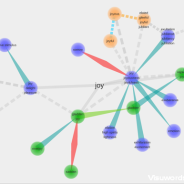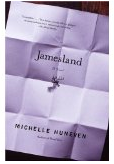An Enriched Environment
Yet Another Healing Image from Sharon Begley’s Train Your Mind, Change Your Brain I tend to think of two times of the year as good times for new beginnings. September when school starts. And January, the beginning of a new year. I tend to think not so much of resolutions, but of new beginnings. And it strikes me that this image of an enriched environment might be a useful one with which to fashion a new beginning. First, where the term comes from. Back in the 1940’s, a scientist by the name of Donald Hebb began taking some of his lab rats home with him in the evening to keep as temporary pets. The other rats remained in the lab in their bare cages. And Hebb began to notice something. The rats he took home with him began to act differently than their mates. They were less fearful, more curious and they showed “more exploratory behavior.” Later, in the sixties, at Berkeley, a team of scientists formalized this notion by raising some rats in bare cages and other rats in what they called “enriched environments”. These enriched rats had access to toys and mazes and frequent handling. And it turned out that their brains grew in response to this enrichment—about 5% more cortex, by weight, than their mates without enrichment. Interestingly, these studies were instrumental in the development of Head Start, the program for pre-school children. And a number of follow-up studies have been done since. In one, it was shown that mice provided with an exercise wheel will tend to run about four to five hours a day—and in turn will produce about twice as many new cells in their brains as sedentary mice. A key finding here is that the exercise needs to be voluntary to be beneficial. If the exercise is forced in some way—for instance by using a negative stimulus—then the new cell growth doesn’t occur so lavishly, presumably because the stress of punishment outweighs the benefit of the exercise. It’s fascinating—this notion that not just exercise but voluntary exercise grows new brain cells. (So—it’s good to find a way to exercise but even better if we don’t stress out about it or beat ourselves up over the whole deal.) Here’s Fred Gage talking to the Dalai Lama: We think voluntary exercise increases the number of neural stem cells that divide and give rise to new neurons in the hippocampus. . . But we think it is environmental enrichment that supports the survival of these cells. Usually, 50 per cent of the new cells reaching the dentate gyrus of the hippocampus die. But if the animal lives in an enriched environment, many fewer of the new cells die. Environmental enrichment doesn’t seem to affect cell proliferation and the generation of new neurons, but it can affect the rate and the number of cells that survive and integrate into the circuitry. The voluntary exercise stimulates the new cells. And then the enriched environments leads the brain to find a place for those new cells in the circuitry. So. . . an exercise wheel in the center of the living room? And an enriched environment radiating out from it? Hmmm. A new beginning for January?______________________________________________ See other pieces on this book: An Overview The Enchanted Loom A...
read more


